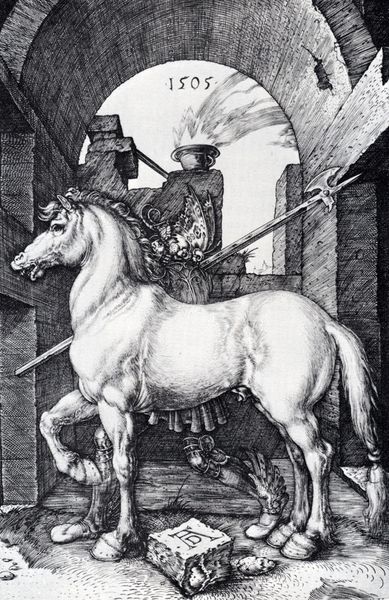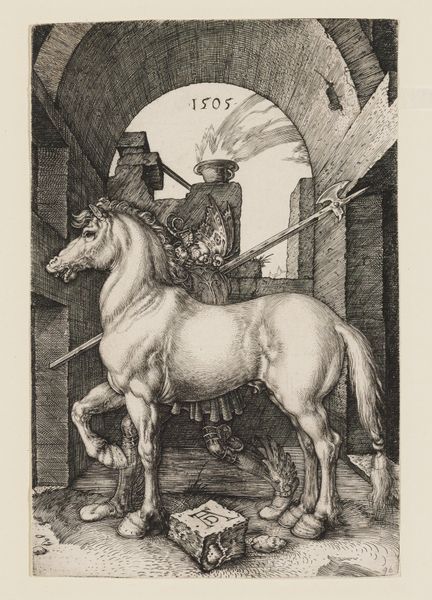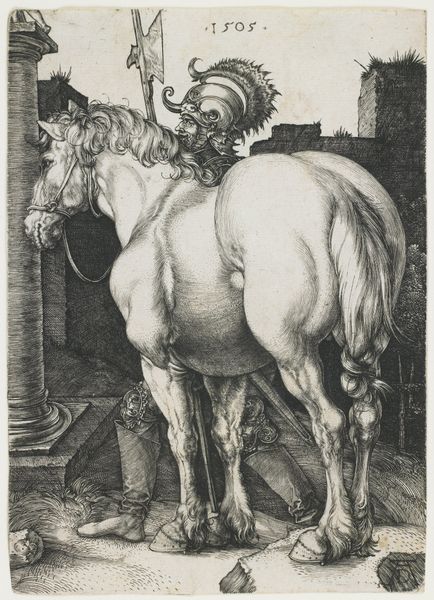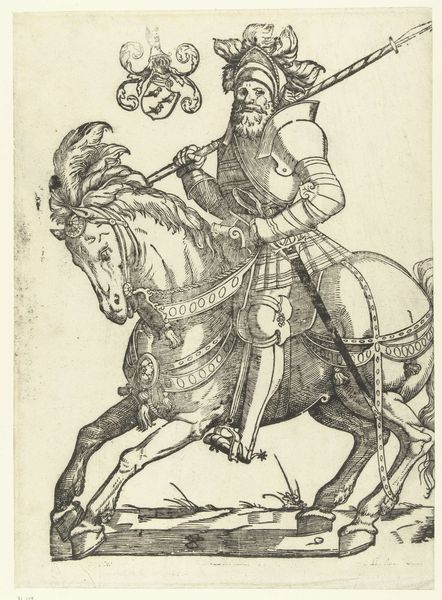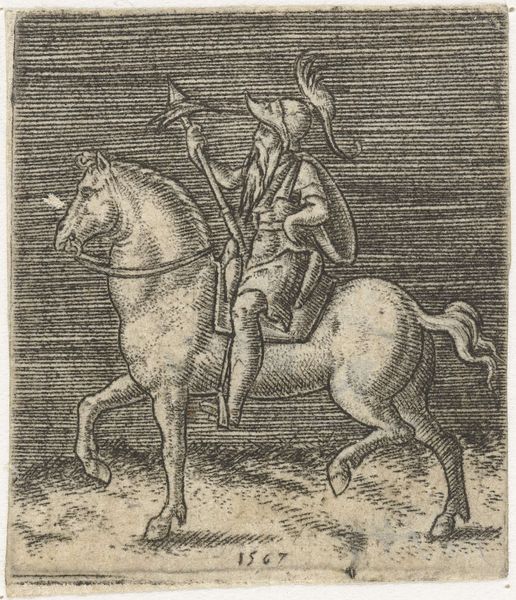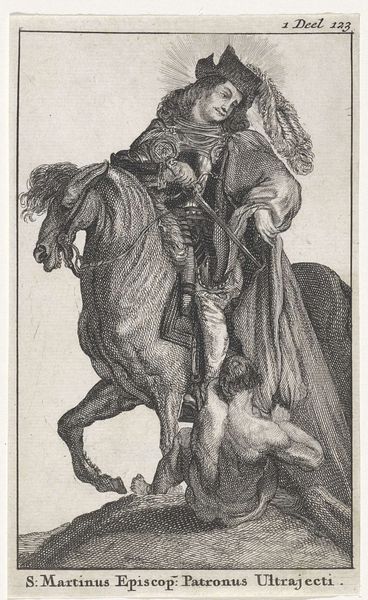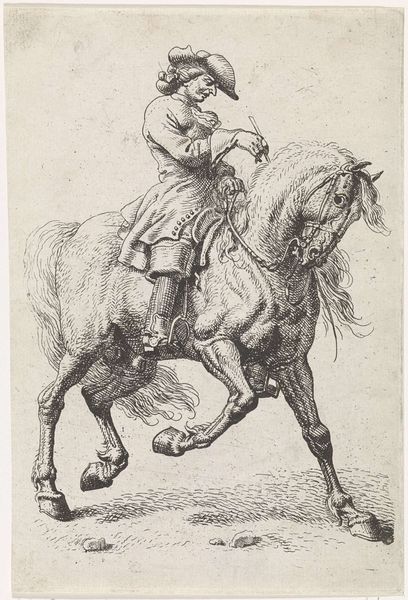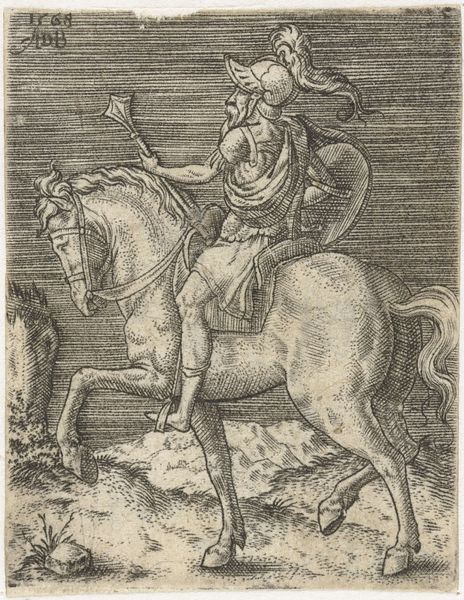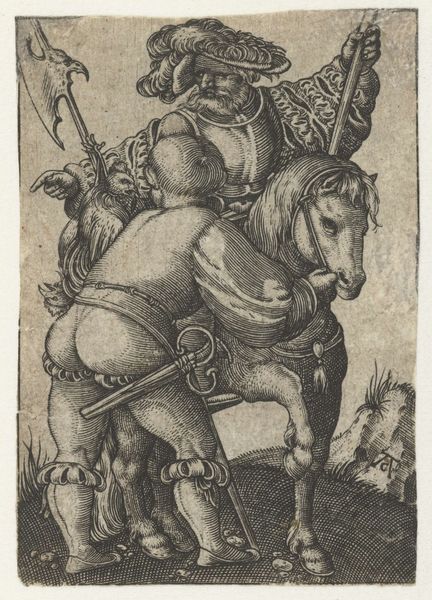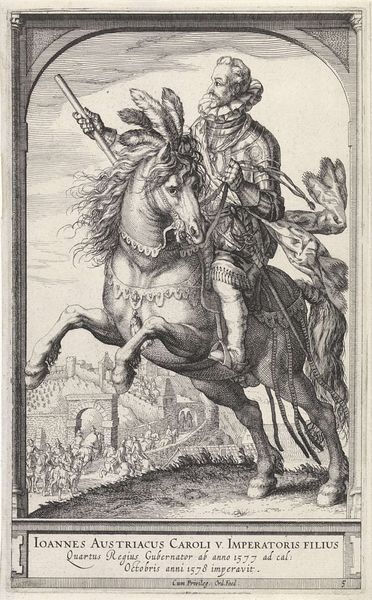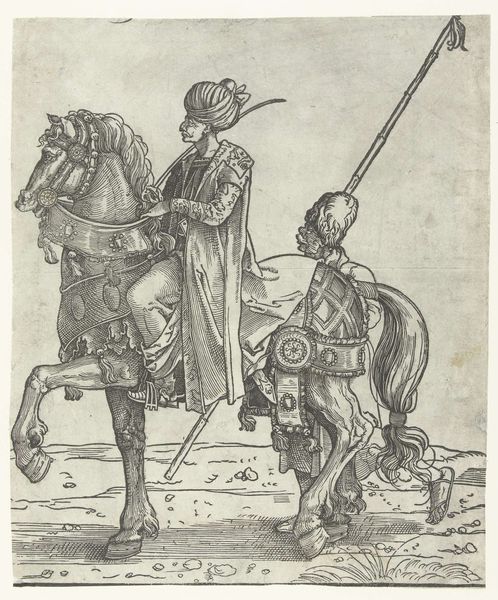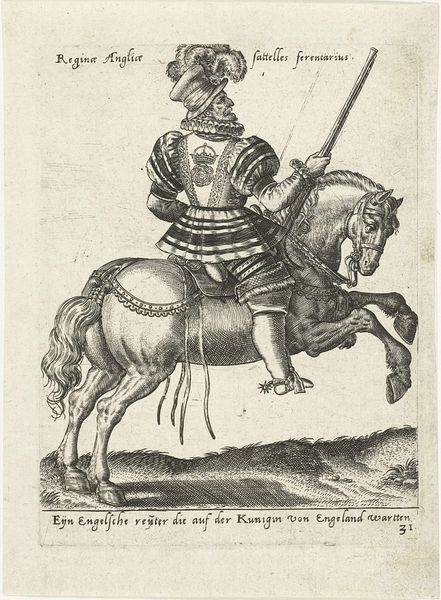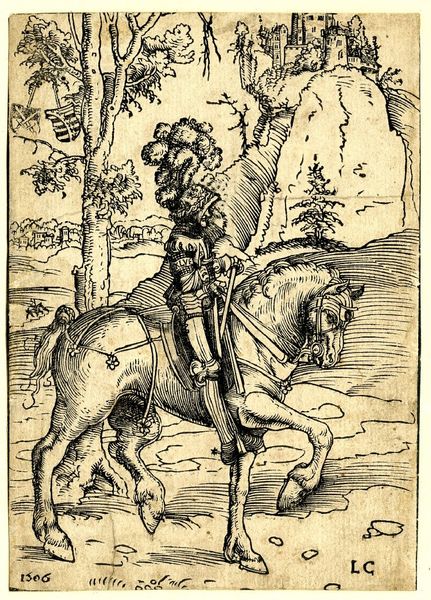
Dimensions: height 164 mm, width 107 mm
Copyright: Rijks Museum: Open Domain
Albrecht Dürer created this engraving, "The Little Horse," around 1505, a time of significant social and religious upheaval in Europe. Dürer, a master of the Renaissance, captured the era's complex relationship to symbolism, status, and power in this detailed print. Horses in the 16th century were potent symbols, and the figures that accompany the horse enhance this message of strength and authority. Notably, Dürer subtly places his own monogram, a mark of his identity and status, near the horse's hooves. The historical context of the Reformation, with its debates about faith, individual identity, and authority, deeply affected artists like Dürer. His decision to focus on such worldly symbols can be seen as a reflection of the changing values and the emerging merchant classes of the time. The emotional weight of the artwork comes from the silent, imposing presence of the horse, caught in a moment that feels both grand and intimate. Dürer invites us to contemplate the shifting dynamics of identity, class, and faith through the lens of his artistry.
Comments
No comments
Be the first to comment and join the conversation on the ultimate creative platform.

